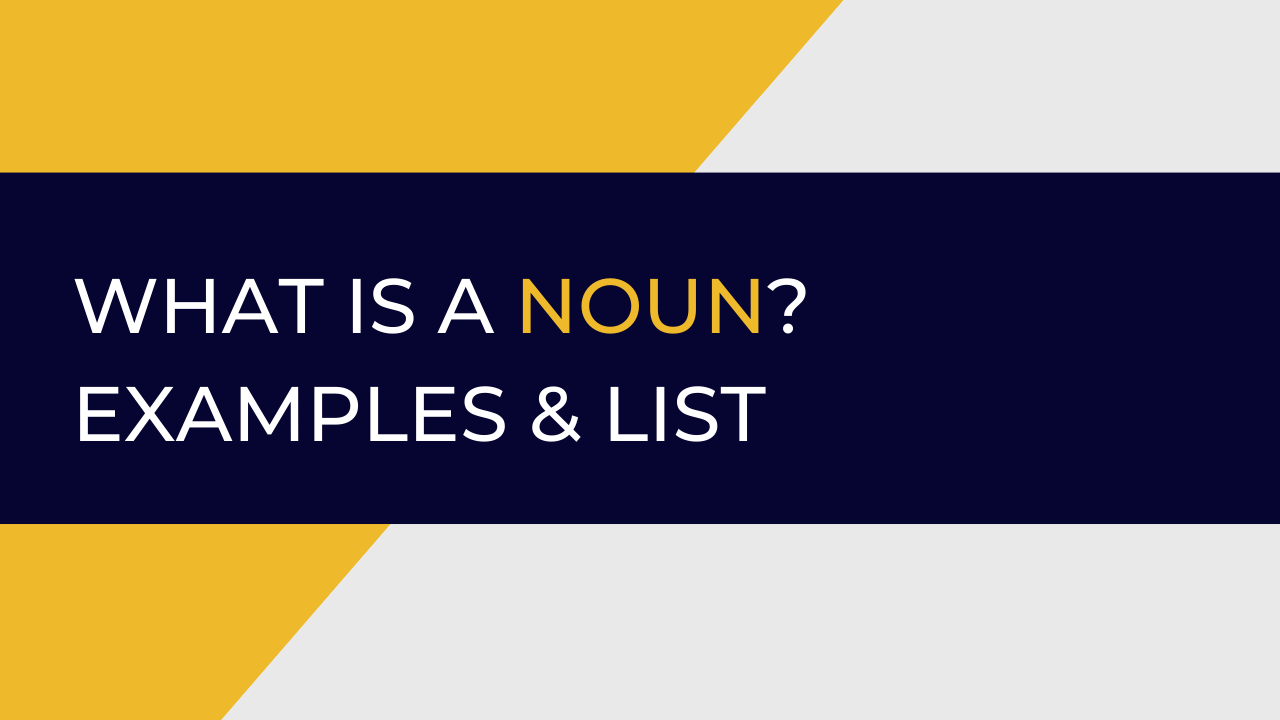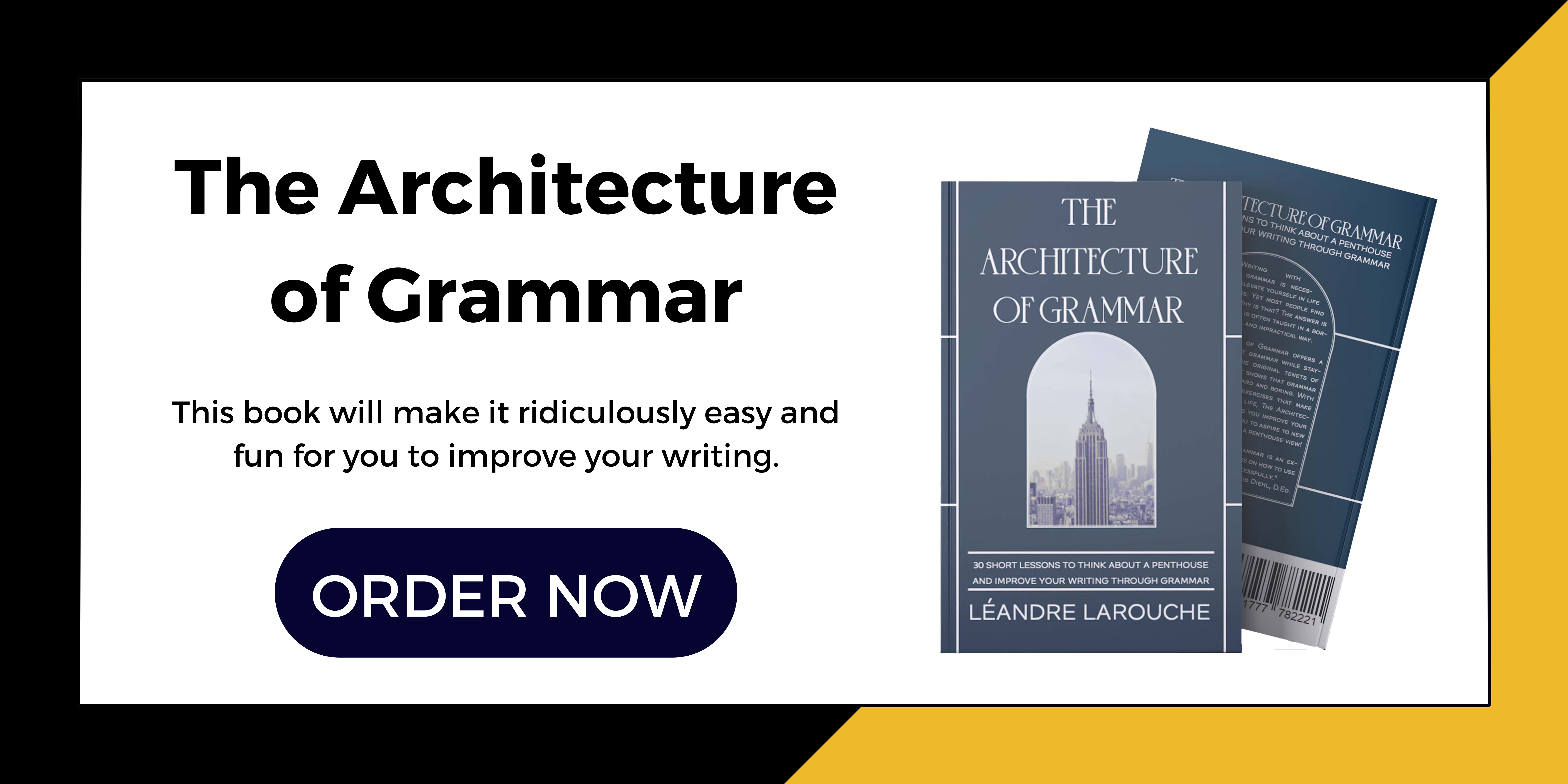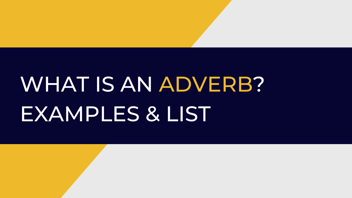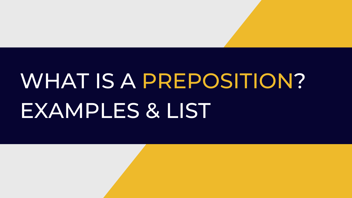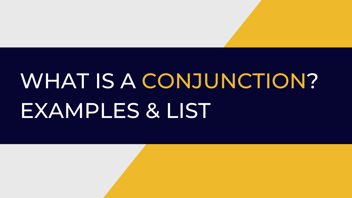What is a Noun? Definitions, Examples, and a Comprehensive List
Whether you're a novelist, copywriter, or entrepreneur trying to articulate your vision, your writing is only as strong as the words you choose—and nouns are the backbone of those choices. As someone who’s written books, ghostwritten for dozens of clients, and helped over 130 leaders sharpen their voice, I’ve seen one mistake repeated more than any other: misunderstanding the power of a well-chosen noun.
Most people think of nouns as simple grammar terms they learned in grade school—"a person, place, or thing." But in serious writing, nouns do more than identify. They carry meaning, emotion, and clarity. They’re the difference between vague and visceral, between forgettable and unforgettable.
In this guide, we’re going far beyond the dictionary definition. You’ll not only learn what a noun is—you’ll learn how to use nouns like a pro, so every sentence you write hits harder and reads smoother.
What Is a Noun?
A noun is a word that names something—a person, place, thing, idea, or even a feeling. It’s one of the eight parts of speech, and arguably the most essential. Why? Because without nouns, we have no subject, no object, and no way to anchor meaning in a sentence. You can’t write a powerful sentence without at least one noun—unless you’re intentionally breaking the rules for stylistic effect.
From a writing craft perspective, nouns are content words—words that add substance and meaning. They contrast with function words like prepositions or conjunctions, which support sentence structure but don't carry much imagery or weight. As content words, nouns are the raw material of narrative and description. They name your characters, define your settings, and articulate your concepts.
Think of a sentence as a story in miniature. Every story has players, places, and events. The players and places? Those are your nouns. Even abstract ideas like freedom, joy, or conflict are nouns—they don’t exist physically, but they’re still central to the meaning of your message.
Here's the key insight: not all nouns are created equal. Some are precise and concrete; others are vague and abstract. As a writer, your job is to choose nouns that paint pictures in the reader’s mind—not nouns that blur the scene.
The Core Purpose of Nouns in Writing
Most grammar lessons stop at defining nouns. But if you're serious about writing—especially if you're writing to persuade, inspire, or lead—you need to understand why nouns matter so much.
Nouns carry the core message of every sentence. They're what your reader pictures. Verbs show action. Adjectives add color. But nouns deliver the what. Strip away all the other parts of speech, and if you're left with the right noun, your sentence can still land.
In storytelling, nouns represent your characters, your settings, your objects. In persuasive writing, they encapsulate your arguments, your solutions, and your differentiators. And in business writing, the wrong noun can tank your clarity—while the right one can sharpen your authority instantly.
Here’s what most writers miss: the stronger and more specific your nouns, the stronger and clearer your writing. A noun like thing or situation doesn’t carry weight. But policy failure, culture shift, or data breach? Now you're saying something real.
When you make nouns the focal point of your sentence, you automatically tighten your message. You strip away fluff. And you speak directly to your reader’s imagination.
Want to elevate your writing? Start by upgrading your nouns.
Types of Nouns (With Definitions and Examples)
Understanding the different types of nouns isn’t just about learning grammar — it’s about choosing the right word for the right moment. Each category of noun brings a different function to your writing. Some are broad, others specific. Some add precision, others abstraction. As a writer, your ability to recognize and apply these categories strategically will elevate the clarity, tone, and impact of everything you write.
Below is a breakdown of the most common noun types — including definitions, usage insights, and examples.
Common Nouns vs. Proper Nouns
A common noun is a general name for a person, place, or thing. It’s not capitalized unless it begins a sentence.
Examples of common nouns:
city, book, teacher, animal
A proper noun, on the other hand, is the specific name of a person, place, or thing. It is always capitalized.
Examples of proper nouns:
New York, To Kill a Mockingbird, Mr. Thompson, Google
Pro writing tip: If you’re unsure whether a word should be capitalized, look at the context — or refer back to your rules on determiners and pronouns. They often signal the type of noun that follows.
Concrete Nouns vs. Abstract Nouns
Concrete nouns refer to things you can see, touch, hear, smell, or taste. They are physical and tangible.
Examples of concrete nouns:
desk, banana, car, laptop, rain
Abstract nouns, by contrast, refer to ideas, emotions, or qualities—things you can’t physically sense.
Examples of abstract nouns:
freedom, anger, intelligence, loyalty
As a ghostwriter, I often help clients transform abstract nouns into concrete scenes. “Growth” means nothing until you show it through revenue, team expansion, or market penetration.
Writing tip: Too many abstract nouns can weaken your prose. To tighten your style, use a strong verb and ground your message with a concrete image or detail.
Countable Nouns vs. Uncountable Nouns
Countable nouns (also called count nouns) are individual items you can count.
Examples:
apple, book, email, presentation
-
Singular: an apple
-
Plural: three apples
Uncountable nouns (also called mass nouns) refer to things that can’t be easily counted because they’re seen as wholes or masses.
Examples:
water, advice, music, information
You can’t say two musics or five advices—but you can say two pieces of music or five bits of advice.
This distinction becomes especially important when constructing noun phrases or writing prepositional phrases. If you need a refresher, explore what is a preposition and how it interacts with noun structure.
Collective Nouns
A collective noun names a group of people, animals, or things considered as one unit.
Examples:
team, audience, flock, committee, family
Depending on your region and style guide, collective nouns can take singular or plural verbs:
-
The team is winning. (U.S. English – singular)
-
The team are winning. (British English – plural)
Writing professional documents or blog posts? Be cautious about subject-verb agreement, especially when combining conjunctions with collective subjects. It’s a small detail, but it makes your writing feel polished.
How to Use a Noun in a Sentence
Knowing how to identify nouns is one thing—using them effectively is another. In real writing, nouns serve multiple grammatical functions, and understanding those roles will help you write with greater clarity and control.
At a basic level, a noun can act as:
-
the subject of a sentence
-
the object of a verb
-
the object of a preposition
-
part of a noun phrase
-
the base of a modifier or appositive
Let’s break down each usage with examples and guidance.
1. Nouns as the Subject
The subject is the person, place, or thing performing the action.
Examples:
-
The woman walked into the office.
-
Growth takes time.
-
New York never sleeps.
In each case, the noun provides the anchor of the sentence. Without it, the verb has no actor.
Want to understand how nouns work in more complex structures? Read about what is a verb and how subjects and verbs work together to form meaning.
2. Nouns as the Object
Nouns can serve as the direct or indirect object of a verb.
Examples:
-
I hired a writer. (direct object)
-
She gave the team a pep talk. (indirect object: the team; direct object: a pep talk)
Using specific nouns instead of general ones (e.g., “a specialist” instead of “a person”) adds weight and precision to your sentence.
3. Nouns as the Object of a Preposition
Prepositions require objects, and nouns fulfill that role.
Examples:
-
They traveled to Spain.
-
He placed the book on the table.
-
She spoke with conviction.
Want to sharpen your understanding of this structure? Explore what is a preposition for more examples of how prepositional phrases clarify meaning.
4. Nouns Within a Noun Phrase
A noun phrase includes a noun and its modifiers. These phrases provide richer detail and description.
Examples:
-
The bright red car sped by.
-
My client’s bold new strategy impressed the board.
Writers often underestimate the power of tight noun phrases. Pairing a strong noun with a descriptive adjective or determiner (e.g., this, that, some) transforms vague writing into vivid scenes. For more, revisit what is an adjective and what is a determiner.
5. Singular and Plural Nouns
Most countable nouns form their plural by adding -s or -es:
-
cat → cats
-
book → books
But there are many irregular plural nouns:
-
child → children
-
person → people
-
mouse → mice
Some nouns don’t change at all in the plural form:
-
deer → deer
-
fish → fish
These distinctions matter. Using a singular noun when the subject is clearly plural (or vice versa) weakens your credibility—especially in academic or professional writing.
Review the nuances of singular and plural usage and how plural nouns affect verb agreement for added precision.
Why Strong Nouns Improve Your Writing Instantly
One of the most overlooked tools in a writer’s toolbox is the strategic use of strong nouns. Most people focus on verbs or adjectives when they want to make their writing punchier—but nine times out of ten, upgrading your nouns will make the bigger difference.
Here’s the truth: not all nouns are created equal.
Some nouns are powerful and precise. Others are vague, general, or overused. Weak nouns slow down your writing, blur your message, and force you to lean on modifiers that shouldn’t be doing all the heavy lifting.
Let’s break this down.
Strong vs. Weak Nouns
Weak nouns require explanation or support. You often see them paired with unnecessary adjectives or filler words.
Examples of weak or vague nouns:
-
thing
-
issue
-
area
-
situation
These words say almost nothing on their own. You have to do a lot of work around them to clarify what you actually mean.
Now consider strong nouns:
-
policy failure instead of issue
-
market disruption instead of situation
-
urban district instead of area
Strong nouns carry weight. They anchor meaning. They often eliminate the need for extra words. And they help your readers see what you mean instead of guessing.
Need help choosing better nouns? Start with your sentence structure. If you’re relying too much on adjectives or adverbs to clarify your message, it might be a sign your nouns need upgrading.
Nouns Set the Emotional Tone
Nouns aren’t just functional—they’re emotional. The ones you choose can create an atmosphere of positivity, negativity, or neutrality in your writing.
Let’s look at some examples:
Nouns with a positive connotation:
-
joy, truth, friend, faith, pleasure
Nouns with a negative connotation:
-
despair, hatred, lie, crony, dislike
Neutral nouns:
-
person, vehicle, house, building, colleague
You don’t need to use emotionally charged language to write emotionally powerful content. Often, it’s the noun choice alone that sets the tone—especially in speeches, thought leadership, or brand messaging.
Choose Precision Over Abstraction
Abstract nouns (e.g., growth, freedom, innovation) are common in business writing—but they can become lazy stand-ins for specific ideas. If you want your audience to feel something and understand exactly what you mean, translate the abstract into the concrete.
Instead of:
-
“We saw tremendous growth last quarter…”
Try:
-
“We added 14 new clients and increased revenue by 38% last quarter.”
Abstract nouns aren’t bad, but they’re best used in tandem with specifics. For a deeper dive into abstract vs. concrete language, revisit our earlier section on abstract nouns or check out how interjections express tone more explicitly in speech and dialogue.
Common Pitfalls Writers Make with Nouns
Even experienced writers fall into traps when it comes to noun usage. Whether you're drafting a blog post, polishing a speech, or ghostwriting a book, these missteps can dilute your message and weaken your authority.
Let’s look at the most common pitfalls—and how to avoid them.
1. Overusing Abstract or Generic Nouns
Words like thing, situation, area, and issue are technically nouns, but they’re so vague they might as well be blank spaces. Relying on these generic terms makes your writing fuzzy and forgettable.
Instead of:
“We’re facing a challenging situation…”
Try:
“We’re navigating a supply chain breakdown that delayed fulfillment by three weeks.”
Swap abstract nouns for concrete terms whenever clarity matters. For more on this, revisit our breakdown of concrete vs. abstract nouns earlier in this article.
2. Misusing Collective Nouns with Verb Agreement
Collective nouns like team, staff, or committee often trip writers up. Do you treat them as singular or plural? That depends on your regional grammar conventions and intended emphasis.
-
U.S. English: The committee was divided on the issue.
-
British English: The committee were divided on the issue.
Mixing up verb agreement can create confusion or even make you sound careless. When in doubt, recast the sentence for clarity.
Need help? Check out how conjunctions affect sentence structure when collective nouns are involved.
3. Using Nouns That Require Too Much Explanation
Weak nouns often show up when a writer is trying to say something important—but doesn’t yet have the language to pin it down. These “placeholder nouns” tend to signal missing clarity.
Examples:
-
The process needs improvement.
-
We need to address the problem.
Instead, dig into specificity:
-
The onboarding process causes delays for senior hires.
-
We need to address the drop in repeat customer rates.
A great writing habit: highlight every noun in a draft, then ask yourself, “Is this the clearest, strongest noun I can use here?” If not, revise.
4. Stacking Too Many Nouns in a Sentence
This is especially common in academic or corporate writing—phrases like customer experience optimization framework or brand identity architecture document are noun-heavy but clarity-poor.
While noun phrases are powerful, they lose impact when overstacked. Break them up with strong verbs or supporting adjectives to restore flow and readability.
Master Nouns in Your Writing Toolbox
Knowing the rules of grammar is a good start. But mastering nouns means turning theory into habit—knowing instinctively which words to use, and when to use them, for maximum clarity and impact.
Here are five tools and techniques I teach clients (and use myself) to sharpen noun usage in everything from speeches to blog posts to books.
1. Run a Noun Audit on Every Draft
Take a highlighter and mark every noun in a paragraph. Then ask yourself:
-
Is this specific or generic?
-
Is it concrete or abstract?
-
Is it doing too much (stacked) or too little (vague)?
-
Could a noun phrase make this stronger or more vivid?
This one-minute check forces you to be intentional—and it’s a simple way to immediately elevate your writing.
2. Build a Noun Bank from Your Industry
Every niche has its own language. If you’re a founder in fintech, your noun list will look very different from a health coach or an author.
Start compiling nouns from books, articles, and speeches in your space. Focus on:
-
People (e.g., investors, clients, engineers)
-
Places (e.g., platform, marketplace, dashboard)
-
Things (e.g., algorithm, prototype, capital)
-
Ideas (e.g., risk tolerance, growth strategy, equity)
You can even segment these into count nouns and mass nouns to get a clearer picture of usage.
3. Use Strong Noun Phrases to Create Rhythm
One strong noun phrase can do the work of an entire paragraph if it’s crafted well.
Instead of:
“The customer had a bad experience with the return process.”
Try:
“The return-policy loophole frustrated the customer.”
Less fluff. More impact. That’s what noun precision can do.
4. Learn the Power of Plural and Singular Forms
The plural form isn’t just a grammatical detail—it affects tone, emphasis, and clarity.
-
A solution vs. solutions
-
An experience vs. experiences
-
The result vs. the results
Each variation carries a different implication. Be intentional about whether you’re pointing to one thing or many—especially when writing arguments or calls to action.
Need a refresher? Check how singular and plural usage affects structure and tone.
5. Use Noun Lists as a Writing Warm-Up
Before starting a writing session, take 2 minutes and pull 5–10 nouns from your subject matter. Challenge yourself to build short, punchy sentences around each one. This exercise boosts clarity, fluency, and creative flow.
Need help getting started? I’ve compiled two massive noun lists you can draw from:
Bookmark them. Use them. Make nouns your creative trigger—not your crutch.
4,500+ Nouns to Elevate Your Writing
By now, you’ve seen how much impact the right noun can have. But here’s the challenge: in the moment, when you’re drafting a blog post, a chapter, or even a social media update, it’s easy to fall back on the same handful of safe, familiar nouns. That’s why I built something bigger.
Over the years, I’ve compiled extensive noun lists—tools I use myself and with clients when we’re refining drafts. These lists help you push past generic words and find the noun that captures exactly what you mean.
The Common Nouns List (12,000+)
Common nouns give you the vocabulary to describe nearly anything: people, places, objects, and ideas. But when you’ve only got thing, problem, or stuff at your disposal, your writing suffers.
That’s why I put together a list of over 12,000 common nouns you can draw from in your next writing project. Use it to spark ideas, refine drafts, or replace weak placeholders with sharper alternatives.
Explore the full resource here: Common Nouns List (12,000+)
The Proper Nouns List (2,500+)
Proper nouns add specificity and credibility to your writing. They ground your ideas in names, brands, and places that resonate with readers. Think Paris, Einstein, Harvard, Amazon.
This curated list of over 2,500 proper nouns will give you quick access to references you can drop into your content to make it more relatable, authoritative, and memorable.
Explore the full resource here: Proper Nouns List (2,500+)
How to Use These Lists
-
As a warm-up exercise: Pick 10 nouns and build short sentences around them.
-
As a revision tool: Scan your draft for weak nouns, then swap in stronger options.
-
As a creativity spark: Use the lists when brainstorming new ideas for content, character names, or themes.
The more exposure you give yourself to a wide range of nouns, the easier it becomes to write with precision and confidence.
Your Writing Deserves Better Nouns
Every sentence you write is a choice. You can settle for vague, generic nouns that blur your meaning—or you can choose strong, specific nouns that sharpen your message and command attention. The difference between average writing and unforgettable writing often comes down to this single choice.
As a ghostwriter and writing coach, I’ve seen the transformation firsthand. When clients start paying attention to their nouns, their ideas suddenly feel clearer, their authority stronger, and their words more persuasive. It’s not magic—it’s the discipline of language.
Here’s your next step: open your latest draft. Highlight every noun. Then ask yourself, “Is this the clearest, most vivid noun I could use here?” If the answer is no, upgrade it. That one habit will change the way people read—and remember—your writing.
-png.png)

